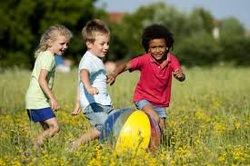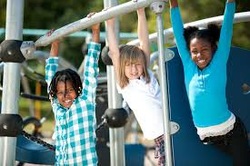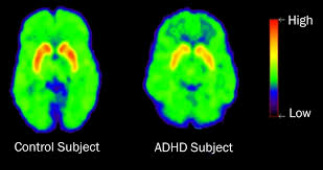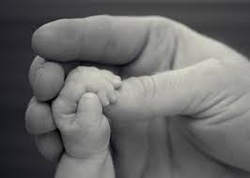
Connections is based on the scientific findings of leading universities, neurologists, and researchers including:
Dr. Carla Hannaford, Dr. Glen Doman, Dr. Melodie DeJager, Eric Jensen, Dr. Jane Healey PhD, Michale Meznich, Dr. William F. Condon, Phillip Teitlebaum PhD, Catherine Schneider, Dr. Harald Blomberg, Dr. Robert Melillo, Dr. Daniel Amen, Moira Dempsey, Hiroshi Asanuma PhD, Dr. Miriam Bender, Dr. Juli-Anne Black and many more.
Enjoy learning the answers these pioneers have discovered about the movement - brain connection.
Rockerfeller University, UCLA Berkely, Yale, Harvard and many more leading institutions have published findings on how movements change the brain. Connections bring all of this invaluable information to you in an easily understood program for your family.
"The brain is not concrete. It is not set. You can change your child’s brain by movements." Dr. Michael Merzenich, a UCLA neuroscientist says, “The brain has different learning pathways. Because the brain reorganizes itself during new learning, the brain has the capacity to rewire itself to improve learning.”
We need to move to learn!
Links to corroborate the brain-body learning connection.
https://youtu.be/41gtxgDfY4s
"If you are wondering if Connections will help your child, do not hesitate! It is worth every penny and every minute!" Cindy L., homeschooling mom & children's pastor
"There is a solid body of evidence that shows a strong relationship between motor and cognitive processes". Jensen, Eric, Teaching With the Brain in Mind, Association for Supervision and Curriculum Development, 1998, p.62
"The newborn has a complete set of particular movements, all completely and universally the same..." Condon, William F., New Dimensions Synthesis of Great Interviews, New Dimensions Radio, San Francisco, 1999
These movements are common in all developing fetuses and begin at 4 and a half months. This matching of movement to sound begins about halfway through pregnancy.
Condon, William F. and Louis Sander. iStatistical studies on the effects of intense noise during fetal life. J. of Sound Vibrations,. 1973, vol. 27: pp. 101 – 111. Also F> N> Jones & Tauscher, J., Residence under an airport landing pattern as a factor in autism. Archives of Environmental Health, 1978, vol. 35; pp. 10-12
Connections is based on the scientific findings of leading universities, neurologists, and researchers including:
Dr. Carla Hannaford, Dr. Glen Doman, Dr. Melodie DeJager, Eric Jensen, Dr. Jane Healey PhD, Michale Meznich, Dr. William F. Condon, Phillip Teitlebaum PhD, Catherine Schneider, Dr. Harald Blomberg, Dr. Robert Melillo, Dr. Daniel Amen, Moira Dempsey, Hiroshi Asanuma PhD, Dr. Miriam Bender, Dr. Juli-Anne Black and many more.
Enjoy learning the answers these pioneers have discovered about the movement - brain connection.
Rockerfeller University, UCLA Berkely, Yale, Harvard and many more leading institutions have published findings on how movements change the brain. Connections bring all of this invaluable information to you in an easily understood program for your family.
"The brain is not concrete. It is not set. You can change your child’s brain by movements." Dr. Michael Merzenich, a UCLA neuroscientist says, “The brain has different learning pathways. Because the brain reorganizes itself during new learning, the brain has the capacity to rewire itself to improve learning.”
We need to move to learn!
Links to corroborate the brain-body learning connection.
https://youtu.be/41gtxgDfY4s
"If you are wondering if Connections will help your child, do not hesitate! It is worth every penny and every minute!" Cindy L., homeschooling mom & children's pastor
"There is a solid body of evidence that shows a strong relationship between motor and cognitive processes". Jensen, Eric, Teaching With the Brain in Mind, Association for Supervision and Curriculum Development, 1998, p.62
"The newborn has a complete set of particular movements, all completely and universally the same..." Condon, William F., New Dimensions Synthesis of Great Interviews, New Dimensions Radio, San Francisco, 1999
These movements are common in all developing fetuses and begin at 4 and a half months. This matching of movement to sound begins about halfway through pregnancy.
Condon, William F. and Louis Sander. iStatistical studies on the effects of intense noise during fetal life. J. of Sound Vibrations,. 1973, vol. 27: pp. 101 – 111. Also F> N> Jones & Tauscher, J., Residence under an airport landing pattern as a factor in autism. Archives of Environmental Health, 1978, vol. 35; pp. 10-12

Philip Teitlbaum, PhD, and expert on human movement patterns at the University of Florida at Gainesville found that infants and toddlers who were later diagnosed with autism used unusual methods of locomotion. "They do not roll over, sit up or crawl or learn to walk like other children. He explained that it is like parts of the brain that control movement are not properly connected. “The body is part of the mind and there is no way to separate it” Dr. Teitlebaun says.
Crawling lays the foundational neurological connections for all future brain connectivity. If the crawling and early motor phases are skipped or abbreviated, then the corresponding brain development phases are also skipped or abbreviated. "Infant crawling has long been known to be crucial for activating full sensory functioning and learning." Hannaford, Carla Dr., Smart Moves: Why Learning is not all in Your Head, Great River Books (formerly Great Ocean Publishers), 2005, p. 129.
"All learning during the first 15 months of life is centered in the vestibular system." (Hannaford, Carla Dr., Smart Moves: Why Learning is not all in Your Head, Great River Books (formerly Great Ocean Publishers, 2005 p. 157)
"Too many holes in foundational skills create situations which force children to use thinking skills when responses should be occurring automatically." (Schneider, Catherine, Sensory Secrets, Concerned Communications, 2001, )
So, what is natural and automatic for you and me can be laboriously difficult for a child who skipped early movement phases. We need to get our kids up and moving to prepare their brains to learn!
Crawling lays the foundational neurological connections for all future brain connectivity. If the crawling and early motor phases are skipped or abbreviated, then the corresponding brain development phases are also skipped or abbreviated. "Infant crawling has long been known to be crucial for activating full sensory functioning and learning." Hannaford, Carla Dr., Smart Moves: Why Learning is not all in Your Head, Great River Books (formerly Great Ocean Publishers), 2005, p. 129.
"All learning during the first 15 months of life is centered in the vestibular system." (Hannaford, Carla Dr., Smart Moves: Why Learning is not all in Your Head, Great River Books (formerly Great Ocean Publishers, 2005 p. 157)
"Too many holes in foundational skills create situations which force children to use thinking skills when responses should be occurring automatically." (Schneider, Catherine, Sensory Secrets, Concerned Communications, 2001, )
So, what is natural and automatic for you and me can be laboriously difficult for a child who skipped early movement phases. We need to get our kids up and moving to prepare their brains to learn!

Connections teaches particular movements that develop specific parts of the human brain.
"Many scientists link lack of vestibular stimulation with dozens of learning problems including reading, writing and math." Jensen, Eric, Teaching With the Brain in Mind, Association for Supervision and Curriculum Development, 1998, p.24.
We need to move to learn! “Early motor stimulation leads to better attention span, listening skills, reading and writing.
Jensen, Eric, Teaching With the Brain in Mind, Association for Supervision and Curriculum Development, 1998, p.24
"Many scientists link lack of vestibular stimulation with dozens of learning problems including reading, writing and math." Jensen, Eric, Teaching With the Brain in Mind, Association for Supervision and Curriculum Development, 1998, p.24.
We need to move to learn! “Early motor stimulation leads to better attention span, listening skills, reading and writing.
Jensen, Eric, Teaching With the Brain in Mind, Association for Supervision and Curriculum Development, 1998, p.24

All neural organization takes place in response to stimulation and activity, i.e. the use of the neural pathways. The brain and body are in constant communication. Thinking and learning cannot only be a brain function. The process of nerve cells connecting and networking is, in reality, learning and thought. Nerve networks grow out of sensory experiences laying down intricate patters that govern higher level brain development. Experience determines the shape and intricacy of these patterns. ” Hannaford, Carla Dr., Smart Moves: Why Learning is not all in Your Head, Great River Books (formerly Great Ocean Publishers, 2005, p. 11, 18, 30 & 31 157
If there are immature nerve pathways, not all of the messages get through. Blomberg, Harald, M. D., Movements That Heal, with Moira Dempsey, BookPal, 2011, Queensland, Australia
But the great news is ...
“If given the proper stimulation, the brain can change.”
Melillo, Robert, Dr, Disconnected Kids, Penguin Publishing, NY NY, 2009, p.9
If there are immature nerve pathways, not all of the messages get through. Blomberg, Harald, M. D., Movements That Heal, with Moira Dempsey, BookPal, 2011, Queensland, Australia
But the great news is ...
“If given the proper stimulation, the brain can change.”
Melillo, Robert, Dr, Disconnected Kids, Penguin Publishing, NY NY, 2009, p.9

How about ADD/ADHD and movement?
Researchers including Mariya Cherkasova and Lily Hechtman, both of McGill University in Quebec, have found that the frontal lobes of individuals with ADHD have decreased activation.
"People with ADD/ADHD have 8-10% less activity in their prefrontal cortex." Dr. Daniel Amen, Neurologist, Healing ADD, G. P. Putnam's Sons, NY, 2001
But since the brain can be changed ...
Rockerfeller University Neuroscientist Hiroshi Asanuma measured a increase of 25% in the number of neural connections between the sensory and motor cortexes following the use of specific exercises.
Connections will show you specific movements that increase and strengthen the neural pathways between the cerebellum(in the back) and the prefrontal corexes (in the front).
The rhythmic baby movements develop the nerve nets and nerve cells of the cerebellum and its connections to the frontal lobes.”Blomberg, Moira Dempsey, Movements that Heal: Rhythmic Movement Training and Primitive Reflex Integration, Book Pal, Denmark, p.184, 2011
“The sensory stimulation caused by the rhythmic movements encourages the growth of the nerve nets of the brain stem, cerebellum, basal ganglia, and neocortex to develop. This causes attention and concentration to improve and hyperactivity and impulsivity to decrease…It [rhythmic movement] stimulates the basal ganglia to mature and integrate the primitive reflexes which then facilitates the ability to regulate levels of activity and be still.” Dr. Harald Blomberg, Moira Dempsey, Movements that Heal: Rhythmic Movement Training and Primitive Reflex Integration, Book Pal, p. 21, 2011
Researchers including Mariya Cherkasova and Lily Hechtman, both of McGill University in Quebec, have found that the frontal lobes of individuals with ADHD have decreased activation.
"People with ADD/ADHD have 8-10% less activity in their prefrontal cortex." Dr. Daniel Amen, Neurologist, Healing ADD, G. P. Putnam's Sons, NY, 2001
But since the brain can be changed ...
Rockerfeller University Neuroscientist Hiroshi Asanuma measured a increase of 25% in the number of neural connections between the sensory and motor cortexes following the use of specific exercises.
Connections will show you specific movements that increase and strengthen the neural pathways between the cerebellum(in the back) and the prefrontal corexes (in the front).
The rhythmic baby movements develop the nerve nets and nerve cells of the cerebellum and its connections to the frontal lobes.”Blomberg, Moira Dempsey, Movements that Heal: Rhythmic Movement Training and Primitive Reflex Integration, Book Pal, Denmark, p.184, 2011
“The sensory stimulation caused by the rhythmic movements encourages the growth of the nerve nets of the brain stem, cerebellum, basal ganglia, and neocortex to develop. This causes attention and concentration to improve and hyperactivity and impulsivity to decrease…It [rhythmic movement] stimulates the basal ganglia to mature and integrate the primitive reflexes which then facilitates the ability to regulate levels of activity and be still.” Dr. Harald Blomberg, Moira Dempsey, Movements that Heal: Rhythmic Movement Training and Primitive Reflex Integration, Book Pal, p. 21, 2011

The Connections Seminar covers the identification, testing and integration of retained primitive reflexes. If a baby is restricted in movement, the reflexes can remain active and interfere with academics as well as social and emotional behaviors. Retained primitive reflexes will constantly interfere with higher brain functions. Let's hear what more experts have to say ...
“All children with reading and writing difficulties have retained primitive reflexes that may hinder the cooperation of the hemispheres of the brain and the cooperation between the eyes and binocular vision. Dr. Harald Blomberg, Moira Dempsey, Movements that Heal: Rhythmic Movement Training and Primitive Reflex Integration, Book Pal, Denmark, p.184, 2011
"As we get older, our unintegrated reflexes trigger the fight/flight response even when there is no “logical” reason for the stress. So stressed behavior becomes our pattern of responding. http://www.brainfitnessstrategies.com/juggling-brain-development/rhythmic-movement/primitive-reflexes.html
“Children with symptoms of ADHD and learning difficulties always have retained primitive reflexes.” Blomberg, Moira Dempsey, Movements that Heal: Rhythmic Movement Training and Primitive Reflex Integration, Book Pal, Denmark, p.184
“The rhythmic movements stimulate the activity of the prefrontal cortex creating a balance between it and the limbic system.” Blomberg, Moira Dempsey, Movements that Heal: Rhythmic Movement Training and Primitive Reflex Integration, Book Pal, Denmark, p.184134, 2011
Research studies on the Moro Reflex show that boys diagnosed with ADD/ADHD had significantly higher levels of reflex retention than non-diagnosed boys. Results also showed relationships between retention of the Moro Reflex, ATNR, STNR and TNR [other primitive reflexes] with ADD/ADHD symptoms and mathematics abilities. The pattern the researched noticed between these reflexes showed that the “Moro Reflex is the gateway for the inhibition of the other 3 reflexes.” Taylor, Houghton and Chapman, “Primitive Reflexes and Attention – Deficit/Hyperactivity Disorder: Developmental Origins of Classroom Dysfunction” (The International Journal of Special Education, vol. 19, no.1, 2004)
Studies show the “ATNR persistence is significantly associated with levels of attainments in reading, spelling and mathematics and that boys were more at risk than girls for ATNR persistence.” Studies also showed that “movement intervention had a significant impact on reducing the ATNR persistence and children show significant improvements in reading and mathematics.” Dr. Julie-Anne Black, “The effects of the Primary Movement programme on academic performance of children attending ordinary primary school”, The Journal of research in Special education Needs, vol. 5, issue 3, 101-11, Nov. 11, 2005.
At the University of Perdue, Dr. Miriam Bender found the STNR [a primitive reflex] to be present in 75% of a group of children with learning disabilities but not present in any child without a history of learning disabilities. Bender Perdue Reflex Test, 1976
At the Connections Seminar learn how to...
“All children with reading and writing difficulties have retained primitive reflexes that may hinder the cooperation of the hemispheres of the brain and the cooperation between the eyes and binocular vision. Dr. Harald Blomberg, Moira Dempsey, Movements that Heal: Rhythmic Movement Training and Primitive Reflex Integration, Book Pal, Denmark, p.184, 2011
"As we get older, our unintegrated reflexes trigger the fight/flight response even when there is no “logical” reason for the stress. So stressed behavior becomes our pattern of responding. http://www.brainfitnessstrategies.com/juggling-brain-development/rhythmic-movement/primitive-reflexes.html
“Children with symptoms of ADHD and learning difficulties always have retained primitive reflexes.” Blomberg, Moira Dempsey, Movements that Heal: Rhythmic Movement Training and Primitive Reflex Integration, Book Pal, Denmark, p.184
“The rhythmic movements stimulate the activity of the prefrontal cortex creating a balance between it and the limbic system.” Blomberg, Moira Dempsey, Movements that Heal: Rhythmic Movement Training and Primitive Reflex Integration, Book Pal, Denmark, p.184134, 2011
Research studies on the Moro Reflex show that boys diagnosed with ADD/ADHD had significantly higher levels of reflex retention than non-diagnosed boys. Results also showed relationships between retention of the Moro Reflex, ATNR, STNR and TNR [other primitive reflexes] with ADD/ADHD symptoms and mathematics abilities. The pattern the researched noticed between these reflexes showed that the “Moro Reflex is the gateway for the inhibition of the other 3 reflexes.” Taylor, Houghton and Chapman, “Primitive Reflexes and Attention – Deficit/Hyperactivity Disorder: Developmental Origins of Classroom Dysfunction” (The International Journal of Special Education, vol. 19, no.1, 2004)
Studies show the “ATNR persistence is significantly associated with levels of attainments in reading, spelling and mathematics and that boys were more at risk than girls for ATNR persistence.” Studies also showed that “movement intervention had a significant impact on reducing the ATNR persistence and children show significant improvements in reading and mathematics.” Dr. Julie-Anne Black, “The effects of the Primary Movement programme on academic performance of children attending ordinary primary school”, The Journal of research in Special education Needs, vol. 5, issue 3, 101-11, Nov. 11, 2005.
At the University of Perdue, Dr. Miriam Bender found the STNR [a primitive reflex] to be present in 75% of a group of children with learning disabilities but not present in any child without a history of learning disabilities. Bender Perdue Reflex Test, 1976
At the Connections Seminar learn how to...
- test and identify the presence of retained primitive reflexes
- integrate any primitive reflexes that are active
- increase neural activity
- mature the brain stem and mid brain
- develop immature or overactive sensory systems
- relieve ADD/ADHD through rhythmic movements
- explain the total brain body connection
"Fantastic! Worth every penny & minute! This seminar should be attended by all educators, doctors and parents concerned with the proper development of their children."
- Holly D., health coach
"I learned something every minute!" - Kara Z., mother and teacher
- Holly D., health coach
"I learned something every minute!" - Kara Z., mother and teacher